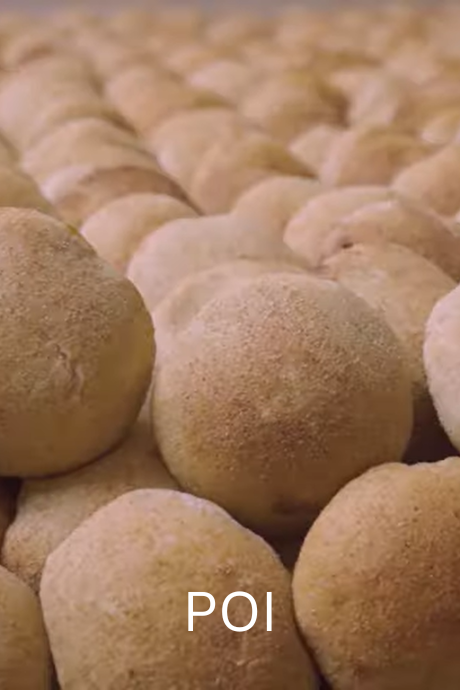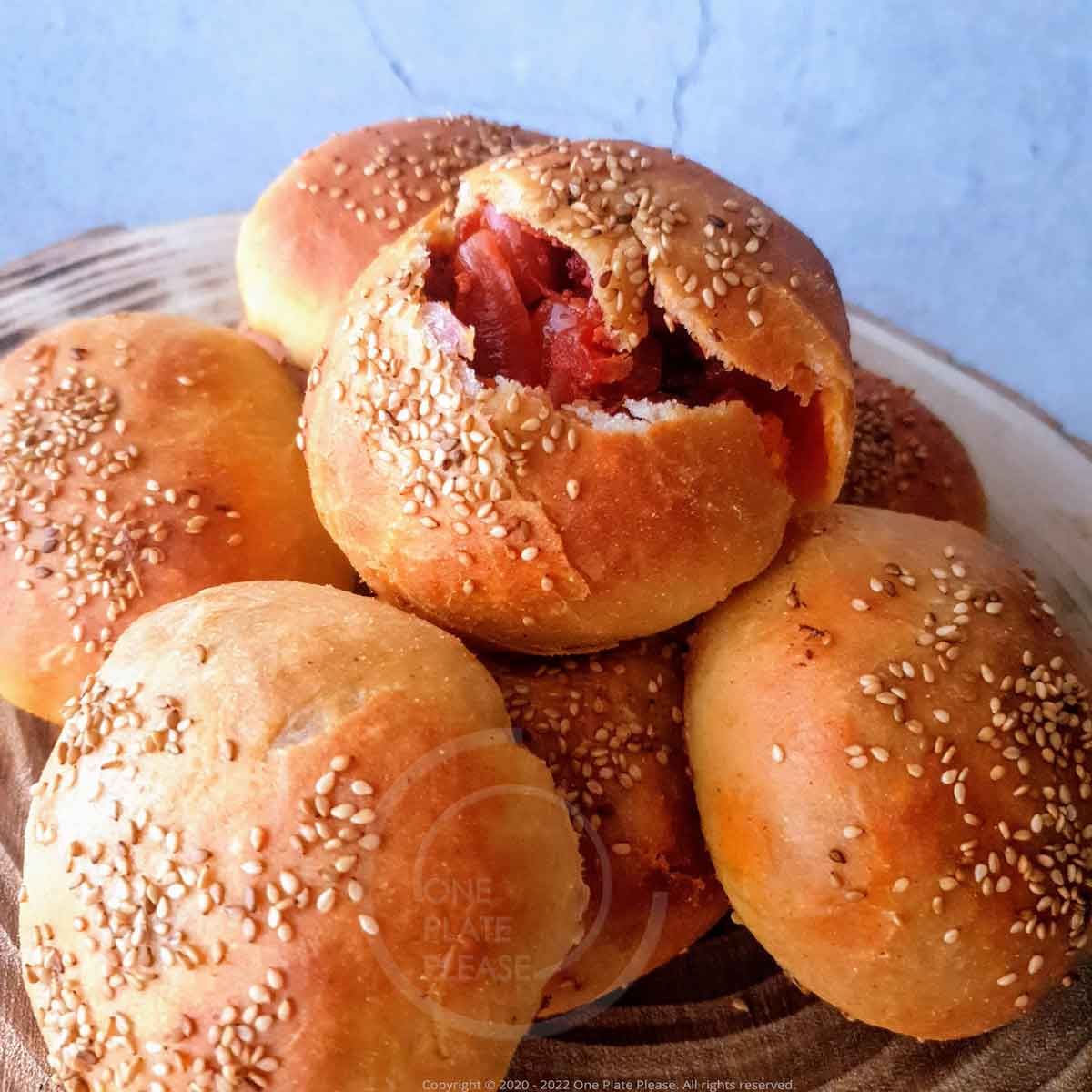Step into a quiet Goan village at sunrise. The roads are cool, wet soil and sea wind smell, and the smell of fresh-baked Poi bread Goa from a small bakery hidden behind coconut trees. This is the Goa that many tourists miss—where tradition rises with the dough, slow and steady. Poi bread, a round, soft, slightly chewy treat, has been part of daily life for generations.
Made with love and time, Poi in Goa is more than just bread. It tells a story about Goan Heritage. Poders, local bakers, wake up before morning to mix flour with toddy, a fermented drink made of coconut palm. The dough is then shaped and cooked in the oven made of large wood, giving it a warm, hollow center, a light pliers, and a sharp, rustic crust. It pairs perfectly with butter, tea, or spicy curry. If there was a scent in Goa, it would have been fresh poi and strong black tea.
The Soul of Traditional Poi
Traditional Poi bread Goa mixes whole wheat and refined flour. The real magic is in the fermentation. Instead of modern yeast, the dough rises naturally with toddy, giving it a soft, sour, dark flavor. The dough is shaped into round slices, lightly dusted with rice flour, and baked on the warm floor of a wood-fired oven. As it bakes, it puffs up, creating a soft, hollow center and a crisp outer crust. This bread represents comfort, culture, and community.
In the past, kids would race barefoot behind Poder's cycle as he delivered fresh Poi wrapped in newspaper. Families would split one open, spread butter on it, and dip it into steaming chai or spicy xacuti curry. Poi was simple, but it brought everyone together.
The Poder’s Legacy: A Vanishing Art
While some village Poders still rise before dawn, pedaling their bicycles through narrow lanes, the traditional practice is slowly fading. Younger generations are moving on, and age-old recipes are at risk of disappearing. The wood-fired furnaces are rare to find now, and toddy-based fermentation takes time, something that’s becoming increasingly precious.
Yet, there’s hope. Some dedicated bakers record the traditional Poi bread recipe, host workshops, and encourage local people and tourists to have a go. They do these things as a kind of living testament, a way of keeping a tradition alive, reminding us that the heritage is not in museums; it’s in our kitchens.
A New Age of Creativity
Today, as Goa welcomes artists, chefs, and bakers across the country (and the world), Poi Bread Goa gets a chance. The soul remains, but the style is changing. Artisanal bakers are experimenting with sourdough cultures instead of toddy. They’re using multigrain flour, millet, ragi, and even activated charcoal to create healthier, earthier versions. The wood-fired stove can now be electric, but the heart is still Goan.
Some bakers even share their own Poi bread recipe, encouraging home bakers to try the process of sourdough starters, local ingredients, and on their terms. Imagine baking Poi with turmeric and flax seeds, or filling it with cheese and sun-dried tomatoes before going in the oven.
These modern versions are perfect for health-conscious eaters who will still be connected to Goan roots. It’s a tradition meeting innovation right on your plate.
read about a sumptuous rendezvous in Assagao — a quaint Goan village that’s become a hub for slow living and soulful food.
From Street Snack to Gourmet Dish
The humble Poi in Goa has stepped out of the breakfast basket and onto gourmet plates. In cafés and restaurants across the state, Poi is being turned into crunchy bruschettas topped with feta and olives, mini sliders stuffed with pulled pork or mushrooms, and sandwich buns for spicy Goan chorizo.
It’s no longer just a side to dip into gravy; it's becoming the star of the show.
You’ll find cafés where Poi bread Goa is toasted with garlic butter and served with soups, or used to make fancy avocado toasts sprinkled with microgreens. There’s even a Poi pizza somewhere, yes, it’s a thing!
This versatility is what makes Poi so exciting for chefs. It absorbs flavour beautifully, holds structure well, and still carries the rustic charm of its traditional self.
Cafés Bringing Poi Back with a Twist
Two wonderful places in Goa are worth visiting if you want to taste the perfect blend of tradition and reinvention:
Two wonderful places in Goa are worth visiting if you want to taste the perfect blend of tradition and reinvention:
Poi & Co., located in the charming courses of Panjim, celebrates POI in its original form as it strips it of modern fillings. You might enjoy a crunchy Poi sandwich with grilled veggies and pesto. Or try a dessert with crumbs and caramel made from Poi. The space itself seems like a step back in the old Goa, which has wooden chairs, vintage posters, and soft lighting. It is warm, comfortable, and full of local attractions - an ideal place to sit back and enjoy both indifferent and fresh.
Poie Re, Panjim is located near the petrol pump. There is a small cafe that has been started by a couple who eat Poi and wanted to bring it into today's world. A passionate couple runs it, turning childhood memories of Poi into a creative menu. You can try rich butter chicken or a creamy crab and mint mayo mixture filled with mixed, drunk Poi that melts in your mouth. The cafe has a pleasant, indifferent environment, which has walls adorned with family images, and the aroma of fresh bread fills the air.
These cafes offer more than food - they make memories.
How to Enjoy Poi at Home
Can’t make it to Goa? Try making Poi at home! A basic Poi bread recipe uses equal parts of whole grains and sophisticated dough. Mix it with water and a sour base as toddlers or sour stars. Let it sit overnight to get up and form it into a flat round.
Bake the bread on a warm surface, such as pizza stones or a molded core pan, until it rises.
Enjoy hot with butter, or make mushrooms for a delicious breakfast, cumelized onion or even with fried eggs and cheese.
The fun of baking Poi is not only in the soft bread you get, but also and the process of doing it with the mind.
Old vs. New: A Beautiful Balance
Here’s how tradition and innovation are co-existing beautifully in Goa’s Poi scene:
|
|
|
|
|
|
|
|
|
|
|
|
|
|
|
|
|
|
The Bread That Tells a Story
In today's sharp transit world, where foods often come in plastic wraps and everything happens immediately, Poi bread Goa stands as a cool reminder that good things take time. The soft, hollow center and sharp exterior shell tell the story of a Goa that is warm, welcoming, and full of taste.
Whether you eat it straight from a village baker or enjoy a Poi Bruschetta in a stylish cafe, you taste something timeless. If you feel inspired, try a poi bread recipe: mix flour, let it rise slowly, bake with care, and then you will understand the magic.
So the next time you are in Goa, look out over the beaches. Wander into a bakery, sip on a hot cup of chai, and break up a hot poi. It's not just bread, it's a bit of Goa's heart, both old and new.

